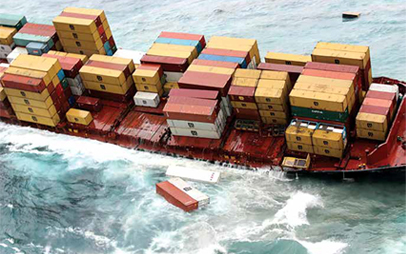 Shipwrecks are a growing concern with typically a 1,000 casualties attributed to shipping globally each year. MSC Napoli, The Container Ship Rena and The Costa Concordia are a few examples of the most notable wrecks. The total cost of the top 20 most expensive wreck removals from the past decade currently stands at $2.1B and is set to increase over time.
Shipwrecks are a growing concern with typically a 1,000 casualties attributed to shipping globally each year. MSC Napoli, The Container Ship Rena and The Costa Concordia are a few examples of the most notable wrecks. The total cost of the top 20 most expensive wreck removals from the past decade currently stands at $2.1B and is set to increase over time.
The Convention
The Nairobi Convention was drafted to provide the legal basis for States to remove or have removed shipwrecks that may risk the safety of lives, goods and property at sea as well as the marine environment. This finally came into force in April 2015 with Denmark being the 10th state to ratify the convention to law.
The Convention applies only to wrecks located in the Member States’ Exclusive Economic Zone (EEZ). However, a Member State may choose to extend the scope of the Convention to its own territory, including its territorial sea.
Under the WRC, claims may be made against a shipowner/club/insurer within 3 years from the date the hazard was determined. However, an action can also be brought against them within 6 years of the date of the maritime casualty that resulted in the wreck. Where the maritime casualty consists of a series of occurrences, the 6 year period shall run from the date of the first occurrence.
Legal Implications
The WRC, has brought about consistency and fairness in its approach to wreck removal, though it may be limited it has however created a uniform and enforceable regime to be followed around the world. Under the WRC, a vessel would not be allowed to enter the waters of a ratifying state unless she was properly insured and had a certificate to prove it. If the vessel’s flag state had not ratified the convention yet, then another Flag State may provide the certificate. Additionally, P&I clubs can no longer walk away from a wreck if the owner/member was unable to pay. This practice is now abolished under the WRC and a claimant can bring any associated/simultaneous action directly against the P&I Insurer. The usual coastal state law that normally applied required any harbour authority issuing a removal order to first prove that a wreck would in fact be a genuine navigational hazard if it was not removed and this was often used as an escape hatch to legitimately ignore such an order. However, this hatch will be closed as the Convention provides an alternative entitlement to demand removal if the wreck creates the “potential” for substantial damage to the environment.
The usual coastal state law that normally applied required any harbour authority issuing a removal order to first prove that a wreck would in fact be a genuine navigational hazard if it was not removed and this was often used as an escape hatch to legitimately ignore such an order. However, this hatch will be closed as the Convention provides an alternative entitlement to demand removal if the wreck creates the “potential” for substantial damage to the environment.
Liability is excluded in the event of an act of war or due to exceptional natural phenomena and if a state can be proven to have failed properly to have maintained navigational aids.
Commercial Implications
From the salvors’ viewpoint, there would be an increase in the amount of work and profits. The price for all of this will be paid by the P&I Clubs, insurers and re-insurers throughout the world with the cost then being passed back to ship owner insured’s and their customers.
The WRC offers increased financial certainty with strict liability on the shipowner for the costs of reporting, marking and removing the wreck if required by the coastal state. The shipowners have a freedom to contract with their choice of wreck removal contractors with direct action against the insurers.
The Nairobi Convention & India
The ratification of the WRC is definitely a step forward by the Government of India. India had earlier acceded to this convention which required at least 10 member states to ratify. Wreck removal came under the subject of the Merchant Shipping Act 1958 & Indian Ports Act, 1908. Previously, under these two acts, ship-owners were legally liable to remove wrecks only within the territorial water if the wreck was a hazard in a shipping lane or close to a navigation channel. Cases like the Rak Carrier, Tanker Pavit and many more, which were abandoned by the owner/club due to absence of the appropriate regulatory framework may now come under the purview of the WRC.